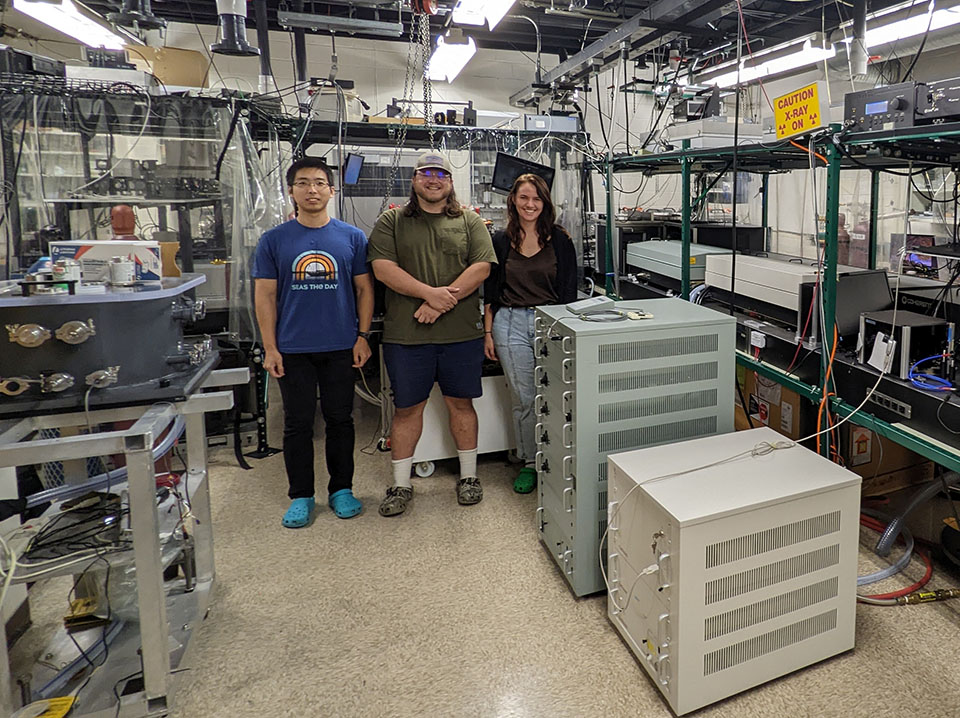News Story
$1.6M Award for New Laser System Received from National Science Foundation

Professor Howard Milchberg has received a $1.61M Major Research Instrumentation (MRI) award from the National Science Foundation (NSF) to upgrade his lab’s existing high power laser system at the University of Maryland. The grant, entitled MRI: Acquisition of a 100 Terawatt Laser Upgrade for Application to Basic and Applied Plasma Physics, will fund building of a new system to be used in a wide range of ultra-high intensity laser experiments to be conducted on campus. The new system will be the highest intensity laser on the east coast of the US.
With the new system, students and postdocs will have access to essential training in running and maintaining a state-of-the-art high intensity laser as well as hands-on experience in performing and analyzing experiments, all valuable skills applicable to future careers in science, industry and national defense.
Experiments being conducted in Dr. Milchberg’s lab are focused on the development and application of advanced charged particle accelerators, intense laser pulse propagation, and ultra-high field nonlinear optics and plasma physics. The new laser system is expected to have the capacity to accelerate electron beams to over one billion electron volts, corresponding to nearly the speed of light. These electron beams will enable a new class of tabletop x-ray and gamma ray light sources and applications. In addition, the increased laser energy of the upgraded will allow for the development of efficient sources of radiation in hard-to-access wavelength regimes, such as terahertz radiation, as well as the study of laboratory astrophysics.
Dr. Milchberg is the PI for this award. Co-PIs are Professors James Drake, Wendell Hill, and Ki-Yong Kim, from the UMD College of Math and Natural Sciences, and Research Scientist Marc Swisdak, UMD Institute for Research in Electronics and Applied Physics.
Published September 8, 2022









